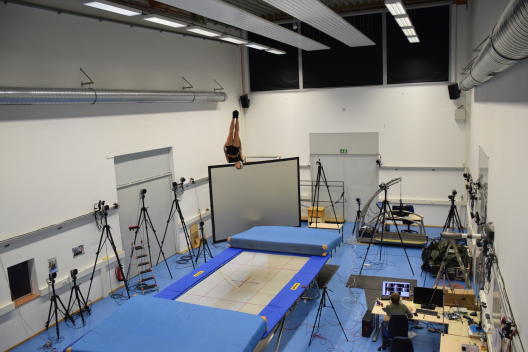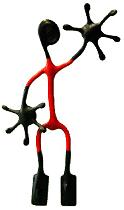Gaze behavior during rotations

Purpose: In trampolining, gymnastics, springboard or platform diving athletes perform difficult somersault variations including several rotations around the body axes and have to demonstrate perfect control of the body during the flying phase. Gaze behavior is essential for controlling during the flight phase and to prepare for a perfect landing. The purpose of this project is to investigate the head motion and gaze behavior during somersaults with or without twists.
Previous work: Gaze behavior of trampoline gymnasts during a back tuck somersault. In trampolining, the performance of a somersault should include an opening phase, i.e. the legs are fully extended pointing vertically at 180° called “kick-out”. This work investigated the gaze behavior of gymnasts during a back tuck somersault with and without a “kick-out”. All subjects fixated their gaze on a specific point at the trampoline bed. During the period of fixation, gymnasts' eyes moved continuously downwards to counteract the backwards head movement. The fixation position depended on the gymnast's landing position in the bed. Performing a somersault with a kick-out allows gymnasts to orient themselves earlier and thus prepare sooner for landing.
Current work: The backwards somersault with a full twist is one of the basic twisted somersaults in trampolining. However, gymnasts' head motion and their gaze behavior has not been studied sufficiently. The current study aims at investigating the head motion and gaze behavior during a somersault with a full twist using a motion capture system and an eye tracking devise.
Publications: Natrup J., et. al. 2020. Gaze behavior of trampoline gymnasts during a back tuck somersault. Human Movement Science 70. doi: 10.1016/j.humov.2020.102589.


